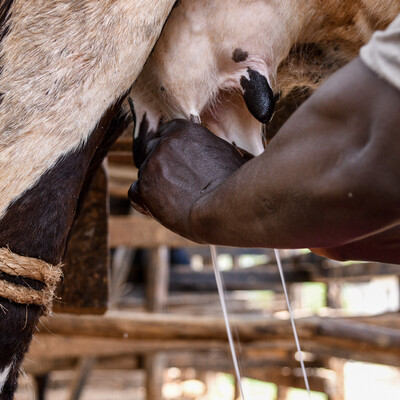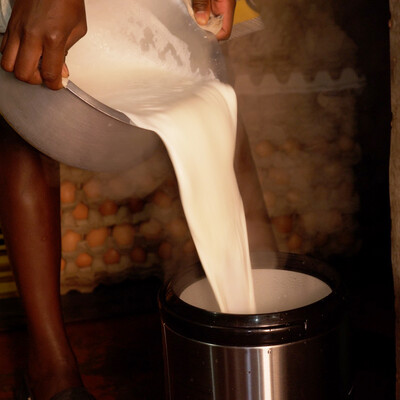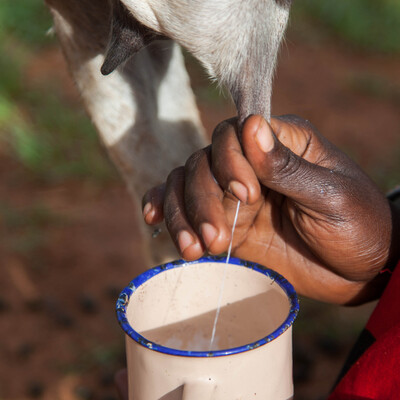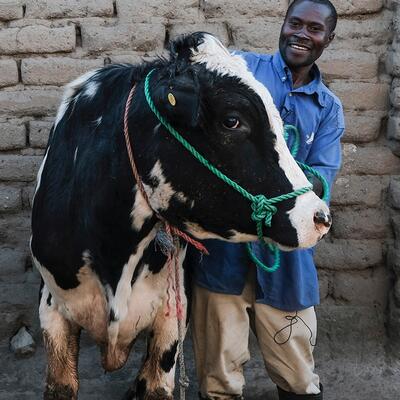

A new herd health manual for smallholder dairy farmers in Kenya
A comprehensive integrated herd health management manual for the Kenyan dairy sector is being created by a team of researchers from the International Livestock Research Institute (ILRI), the Kenyan government, and private sector representatives.
The manual is part of the innovations that will be rolled out by animal health practitioners (both public and private) under the CGIAR’s Sustainable Animal Productivity for Livelihoods, Nutrition and Gender Inclusion Initiative (SAPLING).
Since 2022, SAPLING has been working with livestock sector stakeholders in Kenya on the integrated herd health approach to address animal health and productivity challenges, going beyond paying attention to individual livestock diseases, therapy and management; and embracing more holistic, preventive and context-specific herd management practices. These include husbandry, vaccination, improved nutrition, better reproductive management, enhanced hygiene, appropriate housing and animal welfare. The approach’s sustainability hinges heavily on appropriate incentives for private veterinarians and animal health assistants.
The rollout of the integrated herd health management in Kenya builds on input from a July 2023 consultative workshop in which policymakers, researchers, animal health service providers, drugs manufacturers/distributors and dairy industry regulators, gave inputs covering the different dimensions of dairy production to promote herd health. This year, a validation workshop held at the ILRI Nairobi campus on 29–30 April 2024 brought together the same stakeholders to review the manual before its pilot phase in the project sites in Uasin Gishu, Nandi, Nyandarua and Kakamega counties.
At the validation workshop, James Rao, the SAPLING Kenya Initiative lead scientist, said a comprehensive herd health manual will ensure that the adopted herd health technologies deliver the intended interventions fully and predictably.
Integrated herd management will offer widespread support to farmers within the project piloting sites while ensuring its scalability to benefit many more farmers in the long run across the country,’ said Rao.
The key areas of intervention include animal husbandry, vaccination, improved nutrition, better reproductive management and enhanced disease control, hygiene among others.
The SAPLING project in Kenya is enabling dairy farmers to become profitable by addressing often ignored issues that affect milk productivity in the country including issues such as farm labour that is provided by family members but rarely costed in dairy enterprises. Implementation of the herd health management approach will help alleviate this and other problems by increasing farmer awareness and offering practical guidelines on issues affecting dairy productivity.
Geoffrey Mukora of the State Department of Disease Surveillance and Epidemic Response at the Kenya Director of Veterinary Services (DVS) office, said changing the mindsets and behaviour of farmers is key for improving animal health service delivery since most Kenyan farmers are known to firefight when confronted with a problem in their farms.
‘Many farmers seek veterinary support when they have a crisis and a sensitization program targeting farmers' behaviour change would be beneficial,’ Mukora said.
The other concern about the implementation of a herd health program is how to influence farmers to invest in herd health. This could be achieved through designating fellow farmers who are applying best practices as 'champions'. Making use of channels such as radio to speak to other farmers instead of overreliance on animal health providers was also proposed.
Edward Okoth, principal scientist at ILRI, and leader of the herd health component of the SAPLING project in Kenya, said that data collected through trained animal health practitioners will be used to generate evidence on the impact of integrated herd health practices on productivity and will eventually inform policies on herd management.
The herd health manual consolidates a standardized, yet holistic way of managing herd health, going beyond diagnostics and treatment. When rolled out, its use will rely on an integrated data system supported by service providers (veterinarians or veterinary paraprofessionals) working together with farmers to collate data on the status of herds using standard checklists.
Collected data will guide farmers to identify at most two key constraints in the herd affecting herd productivity. The farmers, working with the service providers, will co-identify how the listed constraints negatively affect the herd and institute measures to correct or altogether eliminate these deleterious factors as they aim to achieve the intended production and productivity of the herd. The service providers and farmers will agree on stipulated farm visits, as they work towards correcting the challenges. The onus will be on the farmer to progressively implement the agreed changes within a specific timeline. Follow-up farm visits will also include possible business models that will incorporate animal health, breeding, feeding, and profitability among others.
The SAPLING research team has been testing, with private extension service providers, offering targeted support for specific farmer concerns presented on-site such as individual livestock diseases and calving among others. This is proving more beneficial compared to group training of farmers that offers blanket advisories without due regard to farmer heterogeneity and peculiarities. The roll out of the integrated herd health manual is expected to begin by mid this year in collaboration with both public and private sector partners.
Given the importance of livestock in the livelihoods of its people and the commitment of public and private actors to transform food systems, Kenya is one of seven countries identified under the SAPLING Initiative to enable livestock producers to engage in inclusive value chains and achieve sustainable productivity gains resulting in improved livelihood.
See more here …
You may also like
ILRI News
Four-year initiative launched to improve milk quality, safety and marketing in central and western Kenya
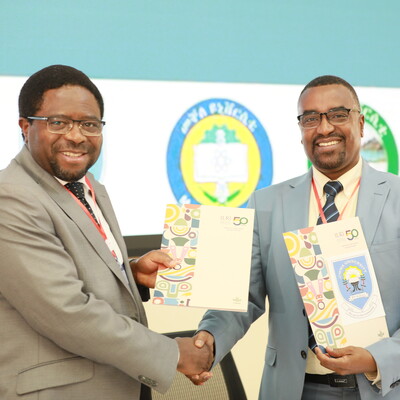
ILRI News
ILRI signs agreements with seven universities to collaborate on practical innovations for Ethiopia’s dairy sector

HABITAT- Farmer workshops on biodiversity and pasture biodiversity assessment on highland dairy farms

ILRI News
The Africa Asia Dairy Genetic Gains project launches mobile app to track dairy animal performance
Related Publications
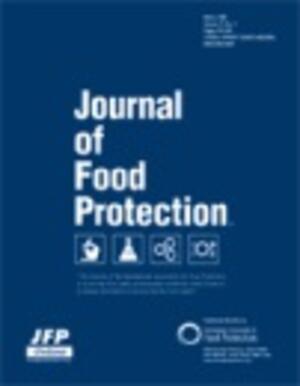
The impact of training intervention on levels of indicator bacteria and prevalence of selected pathogens in raw milk from smallholder women dairy farmers in Central Ethiopia
- Beyene, A.M.
- Nigatu, S.
- Archila-Godinez, J.C.
- Amenu, Kebede
- Kowalcyk, B.
- Degefaw, D.
- Mogess, B.
- Gelaw, B.
- Gizachew, M.
- Mengistu, A.
- Abdelhamid, A.G.
- Barkley, J.
- Yousef, A.
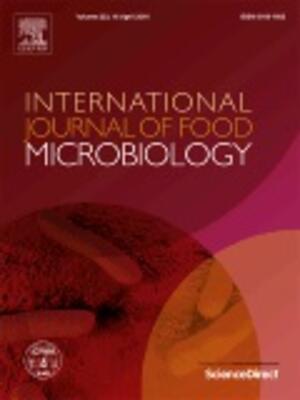
Prevalence of Listeria monocytogenes and Listeria species and associated risk factors for contamination of milk and cottage cheese along the value chains in Ethiopia
- Hassen, A.
- Keba, Abdi
- Ebrai, M.S.
- Mamo, H.
- Geleta, T.K.
- Tessema, T.S.
- Vipham, J.
- Kovac, J.
- Zewdu, A.
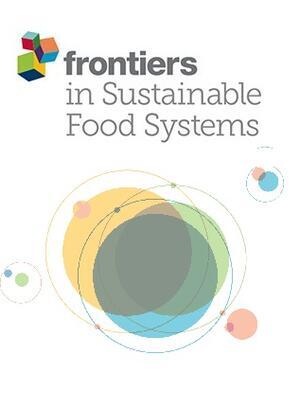
Impact of hygienic milk production training on knowledge, attitudes and practices of women farmers in the central highlands of Ethiopia
- Keba, Abdi
- Tola, A.
- Kaylegian, K.E.
- Kebede, M.
- Zewdu, A.

Rift Valley fever virus remains infectious in milk stored in a wide range of temperatures
- Dawes, B.E.
- De La Mota-Peynado, A.
- Rezende, I.M.
- Buyukcangaz, E.K.
- Harvey, A.M.
- Gerken, Keli N.
- Winter, C.A.
- Bayrau, B.
- Mitzel, D.N.
- Waggoner, J.J.
- Pinsky, B.A.
- Wilson, W.C.
- LaBeaud, A.D.






